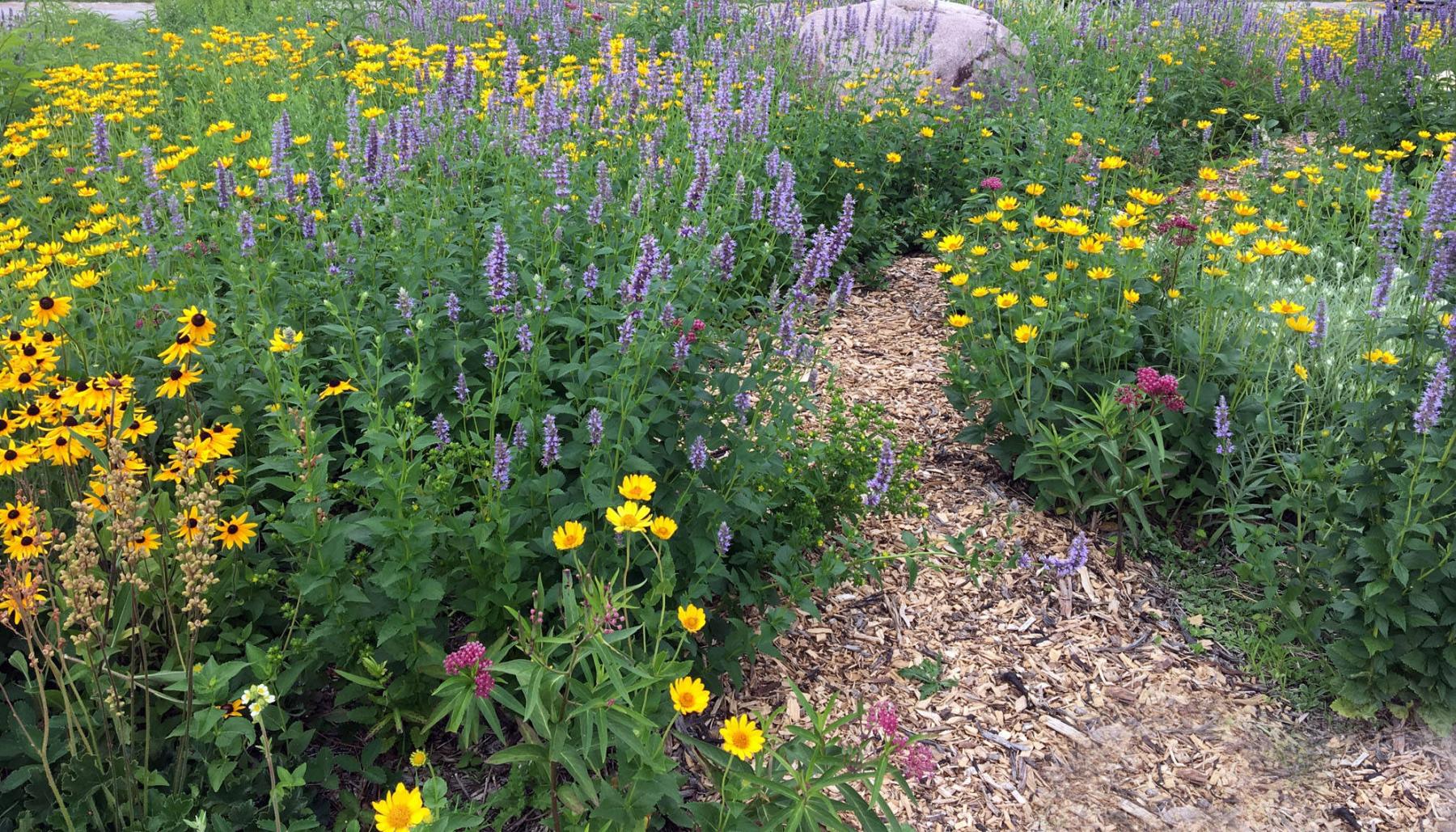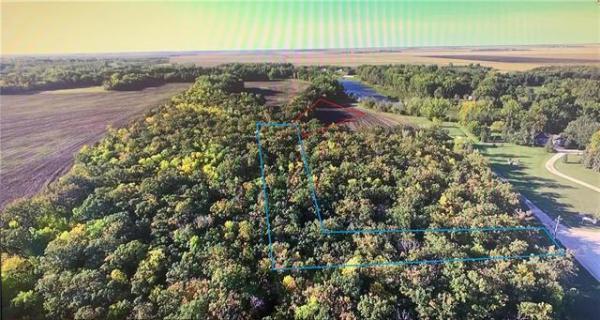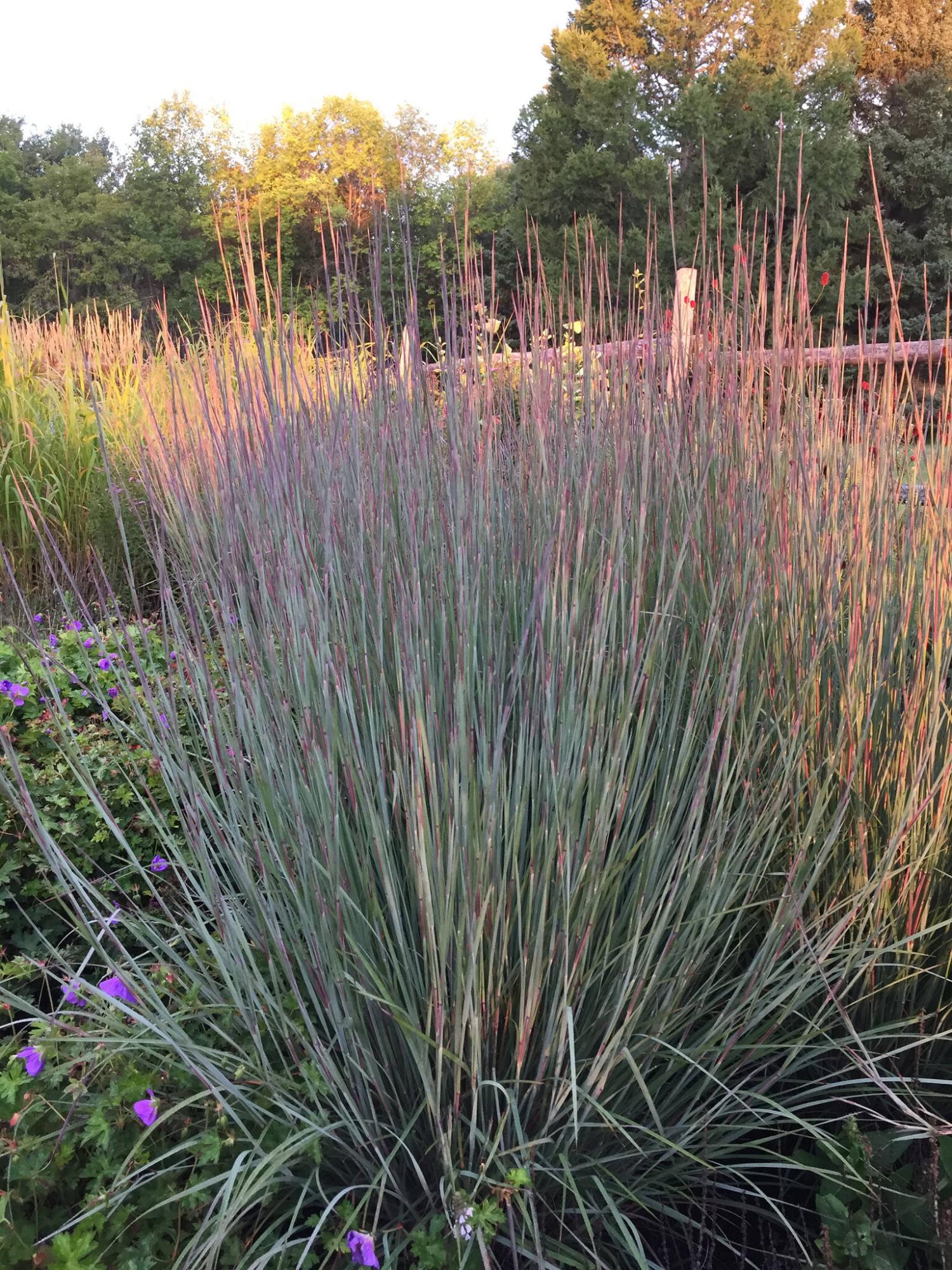
Val Thomson photo
Will you choose a native little bluestem grass or a nativar? The native variety is better equipped to handle the stresses of a changing climate.
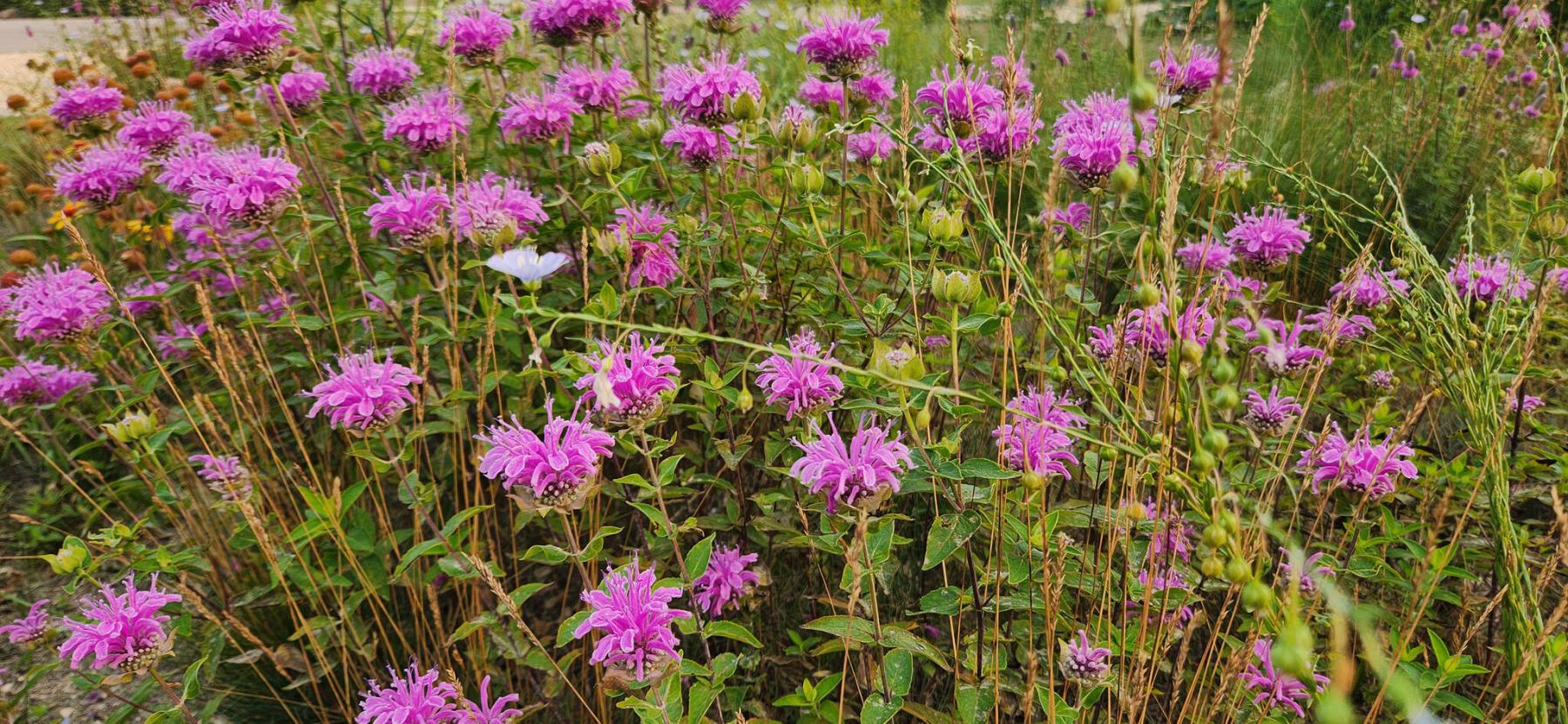
Prairie Flora photo
Wild bergamot, native to Manitoba, has fragrant leaves and flowers that attract pollinators but not deer.
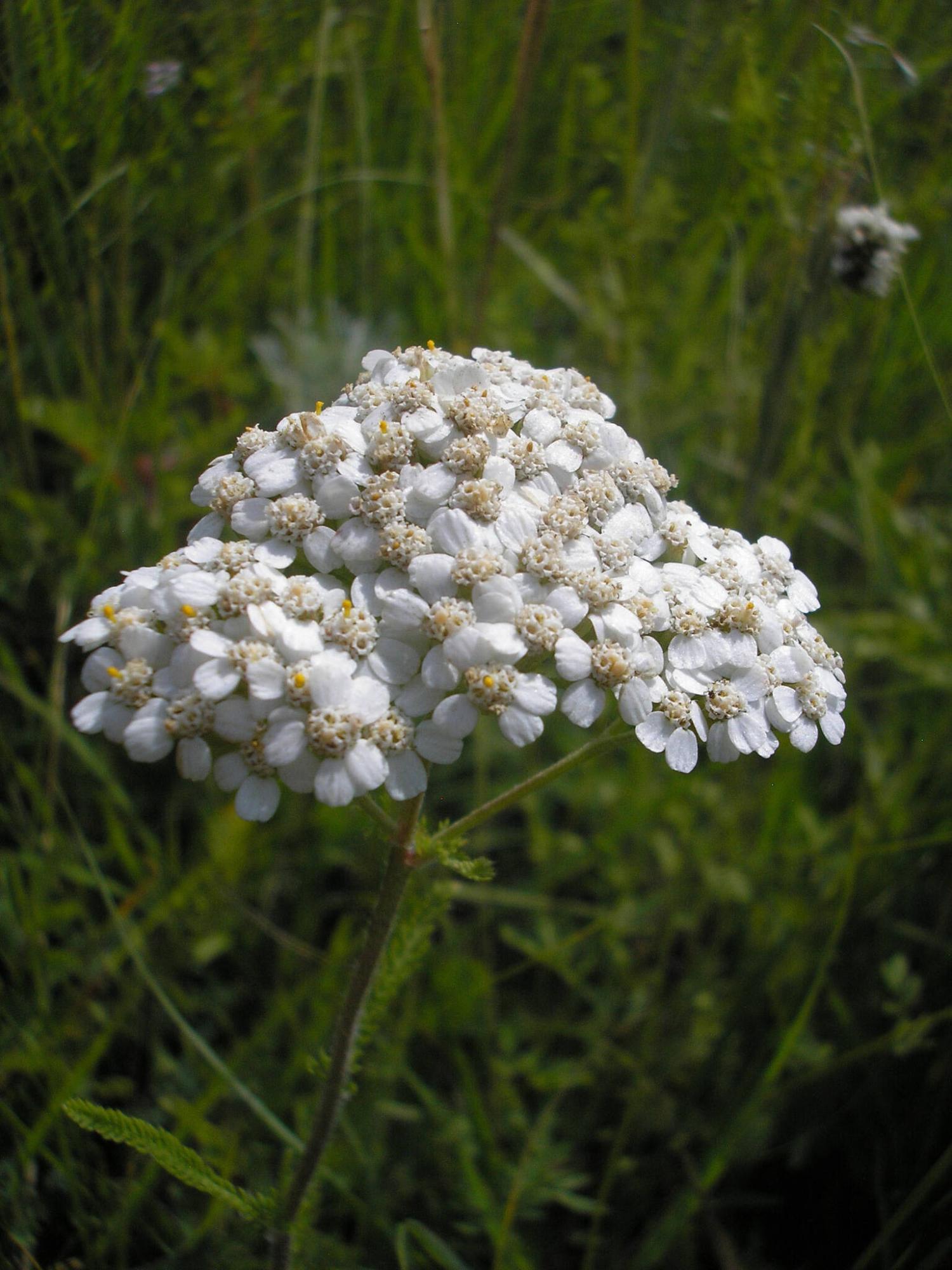
Prairie Flora photo
Native yarrow thrives in a range of tough soil conditions.
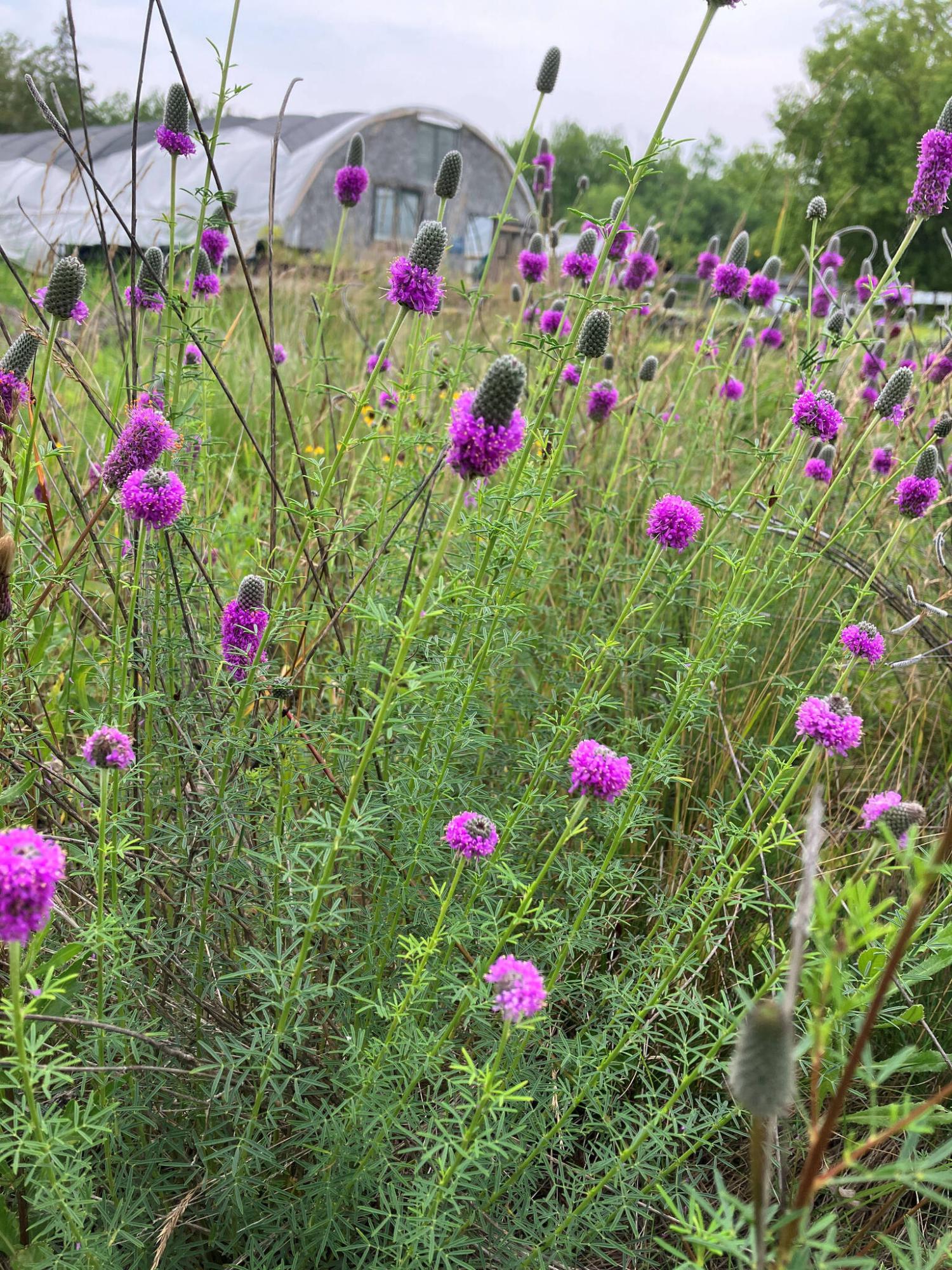
Prairie Flora photo
A mass planting of purple Prairie clover thrives in front of the greenhouse at Prairie Flora.
One of the main reasons for purchasing native plants is to attract and benefit pollinators. For many people, creating an environmentally friendly garden that attracts and supports pollinators is an achievable goal, as well as a tangible way to give back to nature.
But in addition to creating habitat for pollinators, native plants, once established, can help our landscapes adapt to the challenges of a changing climate. The year 2024 was the hottest on record, so we should plant more drought tolerant native plants, right?
Climatologists predict warmer weather will also be characterized by wetter weather. What happens to drought-tolerant native plants in periods of intense rainfall? Can they adapt to the extremes of heavy rainfall as well as drought?
“Drought-tolerant native plants in general are very well equipped to deal with drought,” says Aimee McDonald, co-owner of Prairie Flora Greenhouse which specializes in native Prairie and Manitoba wildflowers and grasses.
“They are also very well equipped to deal with intense rainfall.”
How exactly does that work?
“Well, native plants that are from dry ecosystems are used to less-frequent rainfall,” says McDonald, “so when a rain falls, the plants want to benefit from as much rain as possible, so they have to be able to react quickly. The deep root systems that drought-tolerant plants develop over the years in order to access water deep down in the soil also enable them to handle intense rain events.
“Their deep roots create air pockets in the soil which help the water percolate more quickly through the soil to where it can be soaked up and absorbed. Deeper roots mean more fungal networks, more microbial life, more humus and organic matter — everything that helps to deal with excess moisture.”
Plants native to Manitoba will have greater adaptability to changing weather conditions than nativars. A nativar is a cultivated plant bred from a native species somewhere in North America. “It does make a difference,” says McDonald. “A local native-plant nursery will be able to tell you if the seed was collected from the wild and what conditions it is adapted to. Seed collected from the wild has a diverse mix of genetic strains which increases a plant’s ability to adapt more readily than if seed is collected over and over and over again from the same plant stuck in one little stock garden.”
Of course, a native plant is not guaranteed to survive extreme conditions simply by virtue of being a native plant. “In long periods of wet weather, some native plants will increase or decrease their plant growth,” says McDonald. “Some will delay their flowering. Some native plants might even put off blooming for a whole season and some might just delay blooming. In periods of drought, some native plants will bloom while others conserve their energy. They’ll do what they need to do.”
But while McDonald acknowledges native plants are better adapted to the local climate than nativars or ornamental cultivars, she also says changing climate conditions are still quite novel for our native plants. “Some of them may take longer to catch up, but they are survivors. Keep in mind, too, that our Manitoba climate is already varied, so our native plants are used to wet springs, dry summers and extreme temperatures in winter.”
One of the best ways gardeners can help both wildlife and native plants to adapt to the stresses of a changing environment, says McDonald, is to plant as many different types of plants as possible. “Planting a diversity of plant species is a great way to help ensure the survival of our native plants as well as native wildlife. The wildlife needs those plants. We know native plants can adapt. But we don’t know how quickly the plants are going to adapt to the changing weather or climate.”
McDonald is in the process of creating several display gardens at Prairie Flora Greenhouse’s location in Teulon — a shade to part-shade garden, a deer-resistant garden, a butterfly garden, a rainbow garden and a wet garden. In addition, McDonald maintains stock gardens. Each one is planted with at least three species. “Two-thirds of the gardens were under water last spring but once the rainy season ended and things started drying out, the plants were fine.”
In addition to planting a diverse mix of species, McDonald recommends planting groups of the same species. “If one or two plants die, you’re not going to notice it as much in a garden that’s full of variety and abundance.”
Some of McDonald’s top picks for climate-resilient native plants include wild bergamot (Monarda fistulosa), little bluestem grass (Schizachyrium scoparium), Prairie dropseed grass (Sporobolus heterolepis), yarrow (Achillea millefolium), purple Prairie clover (Petalostemon purpureum) and alumroot (Heuchera richardsonii).
Wild bergamot, also known as bee balm, is adaptable to a range of soil conditions. It has mint-scented leaves and fragrant pink flowers that attract butterflies and hummingbirds but not deer. Plant it in full sun. Mature height is approximately 76 centimetres.
Little bluestem grass tolerates a wide range of soil types including clay-loam, gravel or sand, and wet or dry soil conditions. The seeds provide food for birds. Prairie dropseed is a low-growing grass with drooping seed heads. An ideal plant for the front of the border, Prairie dropseed is tolerant of heavy clay soil and is extremely heat- and drought-tolerant.
Yarrow is practically indestructible. It thrives in a range of soil conditions and is resilient in hot, dry conditions. It has ferny leaves and clusters of tiny white flowers.
Purple Prairie clover has a deep taproot and is very resistant to heat and drought. It needs to be planted in full sun. It has radiant purple blossoms on slender silver cones. “When you plant several together, it’s gorgeous,” says McDonald, who grows it in masses along the edges of her garden. Purple Prairie clover grows to a height of about 45 centimetres.
“Alumroot is another really adaptable plant,” says McDonald. “It comes back year after year. It can take the sun or shade. You can use it as a leafy ground cover between other plants.” It’s also very long-lived and doesn’t move around a lot in the garden. Alumroot is the common name for heuchera, also known as coral bells. While the greenish-white flowers of alumroot are not as showy as the cultivated varieties of heuchera, native alumroot is typically more reliably cold-hardy.
Take time to peruse Prairie Flora’s online plant catalogue (Prairieflora.com) and plan to visit the display gardens in the summer. You will also find an excellent example of a climate-resilient native Prairie garden at Living Prairie Museum, located at 2795 Ness Ave.
Native plants require fewer inputs such as supplemental watering and fertilizing. In addition to attracting and supporting pollinators, birds, butterflies and other wildlife, native plants also beautify a garden with a range of colours and textures.
colleenizacharias@gmail.com
For advice, ideas and tips to keep your outdoor and indoor plants growing, sign up to receive Winnipeg Gardener, a free monthly digital newsletter I write for the Free Press

